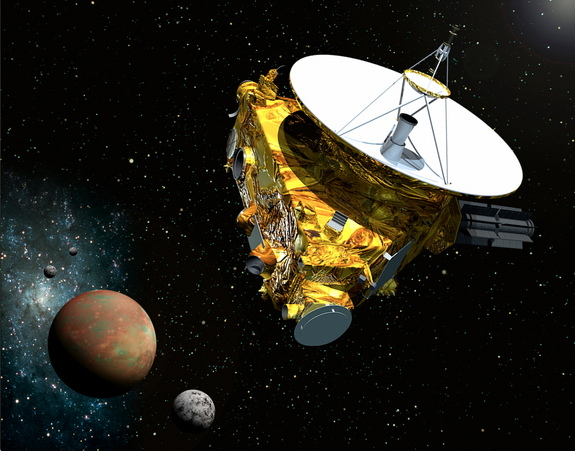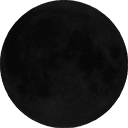
Artist’s concept of NASA New Horizons probe zooming through the Pluto system in July 2015.
Credit: Johns Hopkins University Applied Physics Laboratory/Southwest Research institute
A NASA spacecraft speeding toward Pluto is casting a wary eye on the dwarf planet system, looking for anything that could trip it up in the homestretch of its historic mission. NASA’s New Horizons probe, which is set to perform the first-ever flyby of Pluto on July 14, has begun hunting for possible rings and undiscovered moons, in an effort to identify potential hazards near the dwarf planet. The campaign began Monday (May 11) and involves roughly weekly observations with the spacecraft’s long-range camera through July 1, mission team members said. “You know how Curiosity had its ‘seven minutes of terror?'” said New Horizons principal investigator Alan Stern, of the Southwest Research Institute (SwRI) in Boulder, Colorado, referring to the NASA Mars rover’s harrowing “sky crane” landing in August 2012. “Well, we call this ‘seven weeks of suspense.”



